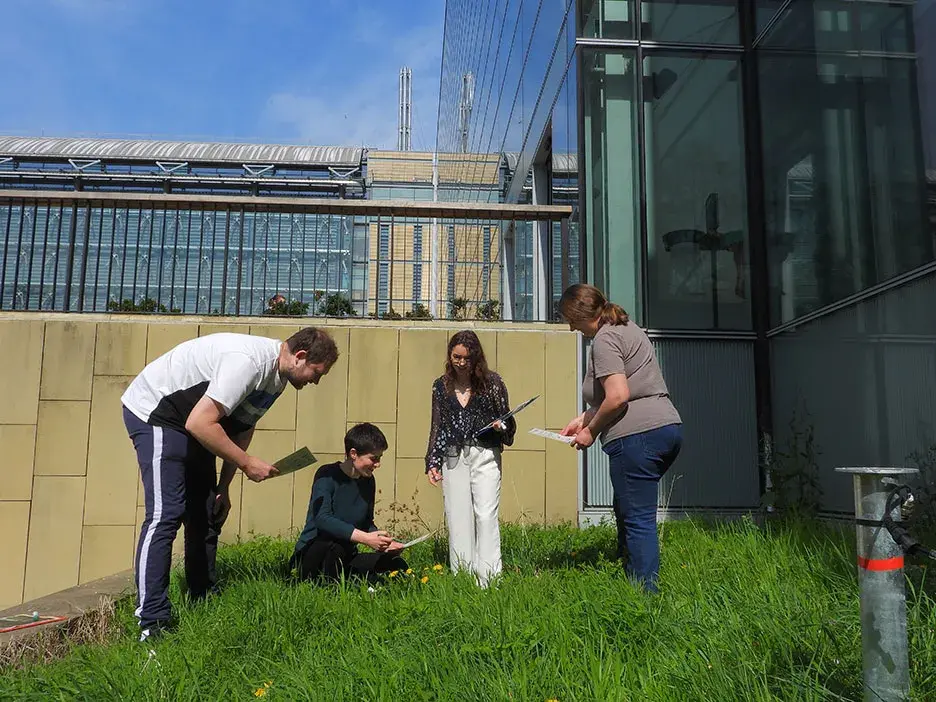Science update: April 2025

Each term, the Nature Park science team give an update on what they've been up to and how they've been using the data you've collected from your school, nursery and college sites.
Hi everyone!
Winter is over and the Nature Park community science team have been out enjoying the spring sunshine! The Nature Park continues to grow, with 816 new sites onto the Nature Park map since our last update. Our team is growing too! We welcomed Nathalie Griffiths and Giuliana Sinclair to the team as Community Science Officers at the Natural History Museum.
This term's science spotlight
It has been an exciting time for habitat mapping!
We listened to your feedback from across the country and have made some changes to the habitat mapping process. We now have a browser-based tool that you can use to add, edit, and delete habitats using both handheld devices and personal computers. This change makes it easier for you to add the habitats you have identified.
The winter weather hasn’t stopped you amazing community scientists; you’ve mapped 6km3 of habitats since our last update, 235km of habitat lines and an amazing 3,956 microhabitats, including 2,485 trees and 132 insect hotels. We 're happy to say we have reached our first target of over 500 habitat maps, but we don’t want to stop there! Can you double it by the end of the year?
A special well done to St Bartholomew's School in Newbury, Berkshire, who have not only mapped their habitats but have also been recording wildlife on their site, with an amazing 610 observations of 323 species so far!
Things have also been progressing behind the scenes on working out how we can predict the sort of biodiversity improvements we might expect to see as schools across the country create new habitats on their sites. We're doing this by building computer models that can estimate this sort of information, such as one model we're currently building to predict what impact planting flowers might have in schools. Building these models involves feeding them a lot of existing data from lots of sources – this particular model is using data we're painstakingly extracting from 238 scientific articles! We’ve got four new Master’s students about to start work on building models for the project: three of them are helping with the work on the flower planting model, and one of them is looking at a model to estimate the impact of wildlife ponds. Wish us all luck!
How we've been using your data this term
Your habitat data directly contributes to scientific research. Over the summer, we aim to begin the first stage of analysis to use this data in answering questions about the habitats and biodiversity present in schools across England.
News: training coming soon
Nathalie is running two in-person training sessions for London-based educators this spring! Aimed at all educators and school staff, these sessions will introduce the Nature Park programme and cover curriculum links and activities such as habitat mapping and biodiversity surveys. Register via Eventbrite using the links below:
- Wednesday 23 April, 16.30-18.00 at Hogsmill Nature Reserve in Kingston upon Thames
- Wednesday 7 May, 16.30-18.00 at Eastbrookend Discovery Centre in Dagenham
We will also be increasing our training capacity further over the coming months. Giuliana will be developing new resources to boost teachers’ confidence in delivering habitat mapping and wildlife surveys, enabling them to confidently answer questions about biodiversity and take ownership of the scientific research branch of the Nature Park. Watch this space!
Coming up next term
- Take part in the City Nature Challenge from Friday 25 April to Monday 28 April. Join in this annual four-day global community science event to discover wildlife on your site. Our team can also support sessions at London schools – get in touch if you’re interested.
- Count pollinators on your site with the Pollinator Count. The longer, warmer days have brought back the insects, and with them, the Pollinator Count! This activity is great for both getting to know your space and recording changes. The Pollinator Count will help you find out how good your site is for flowers and pollinating insects and contribute valuable scientific data. We are currently working on a shorter, simpler version more suitable for KS2-3 and will also have a Master’s student studying the data you collect.
Enjoy the spring and summer!
The Nature Park science team